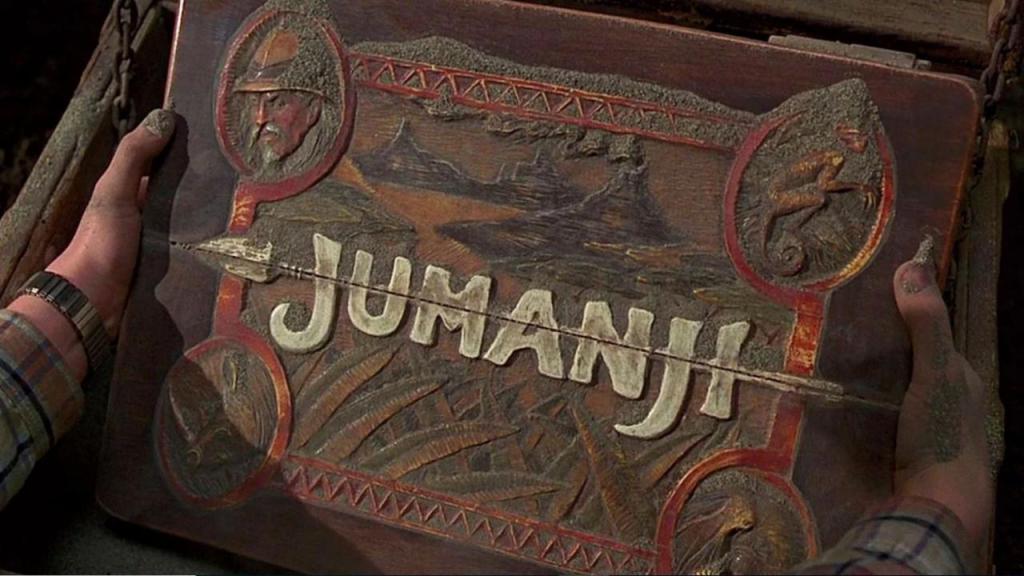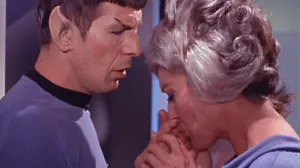When families settle in for their annual viewing of The Polar Express this holiday season, few might realize they’re watching a film that shares a fascinating connection with the action-packed world of Jumanji. That’s because both movies adapt books by Chris Van Allsburg.
Videos by ComicBook.com
Jumanji and The Polar Express Came From the Same Author

Van Allsburg revolutionized children’s literature with his unique approach to storytelling, earning two prestigious Caldecott Medals for Jumanji (1981) and The Polar Express (1985). His books combine meticulous illustrations with a realistic approach to fantastic elements that don’t underestimate young readers, a sin many child-friendly authors commit. It’s no wonder Hollywood was eager to tap into Van Allsburg’s work, eventually adapting Jumanji, The Polar Express, and his sci-fi story Zathura.
The 1995 adaptation of Jumanji, directed by Joe Johnston and starring Robin Williams, transformed Van Allsburg’s 30-page picture book into a box-office phenomenon. The film significantly expanded the original story while maintaining its core themes of consequences and belief, resulting in a box-office hit that’s still fondly remembered as one of the best movies of its time.
Part of Jumanji’s appeal is explained by how good it looks, even by today’s standards. Jumanji’s crew pioneered two groundbreaking CGI programs, one dedicated to developing digital faces they could give the animals and the other to create realistic animated hair. That, associated with state-of-the-art animatronics, allowed Jumanji to offer an eye-popping visual experience unlike anything that had ever come to theaters.
Even if Williams never returned for a Jumanji sequel, Van Allsburg’s story lives on in new star-studded movies featuring Karen Gillan, Jack Black, Kevin Hart, and Dwayne “The Rock” Johnson. That was only possible because the original Jumanji pushed the boundaries regarding special effects and captured the soul of Van Allsburg’s book, without which the franchise wouldn’t have a following.
Unsurprisingly, The Polar Express followed a similar path, with Robert Zemeckis directing a quintessential Christmas movie starring Tom Hanks. Yet, due to a request from Van Allsburg himself, the animated film would become even more revolutionary to Hollywood.
The Polar Express Only Became a Movie Thanks to Tom Hanks

The journey of The Polar Express from beloved children’s book to groundbreaking film hinged on one crucial element: Tom Hanks. Initially reluctant to sell the film rights to his cherished Christmas story, Van Allsburg changed his mind when he learned of the actor’s involvement. Hanks had been a fan of the story since its original publication, so he pushed for acquiring the movie rights through his production company in 1999. However, it would take a moment for The Polar Express to enter production due to Van Allsburg’s decision on how the movie should be made.
Van Allsburg was happy to sell the movie’s rights to Hanks, the purchase came with one condition: The writer simply did not want his book to become an animated feature. That set some creative limitations to the development of The Polar Express right from the start, as it would be extremely challenging to translate the book’s magic events into live-action. The solution came with motion-capture technology, which offered a middle ground that pleased both parties.
Van Allsburg considered mo-cap a tool that deviated from traditional animation, allowing actors to be in the scene, at least in a sense. Meanwhile, the digital models originated from motion capturing still gave the animation team the tools they needed to go as wild as they wanted with the story. In addition, the decision ultimately allowed Hanks to portray multiple characters, including the conductor and Santa Claus himself.
The production confined all filming to a mere 10’x10′ area, where actors wore suits covered in 152 facial markers captured by 72 cameras. Due to the limitations of early motion-capture technology, actors had to exaggerate their performances for the sensors to work properly. While this led to some criticism about the uncanny valley effect in the characters’ appearances, it also pushed developers to improve the technology.
The rest is history. The Polar Express became the first film created entirely with motion-capture animation, marking a pivotal moment in cinematic technology. Its success paved the way for numerous motion-capture productions, including Avatar, Monster House, and A Christmas Carol. Beyond animation, mo-cap would also become the bread-and-butter for Hollywood’s biggest franchises, including Marvel and DC. It’s funny to think it all began with a simple request from The Polar Express’ original author.
The Polar Express is currently streaming on MAX. As ComicBook exclusively revealed, a sequel is currently in development.








